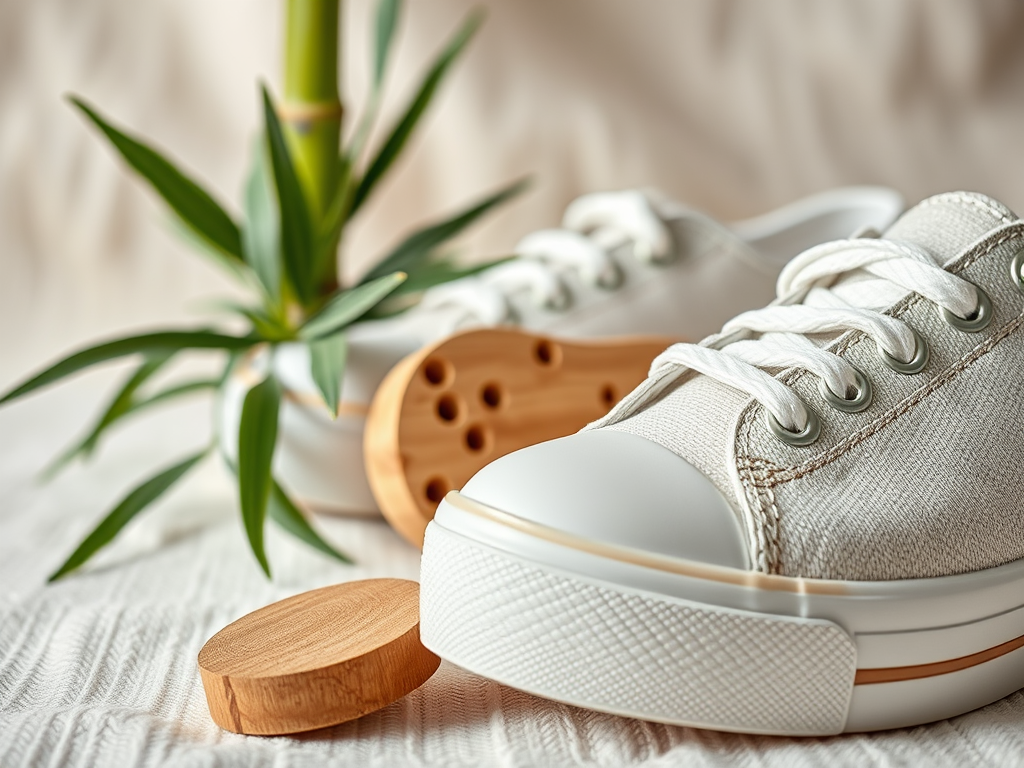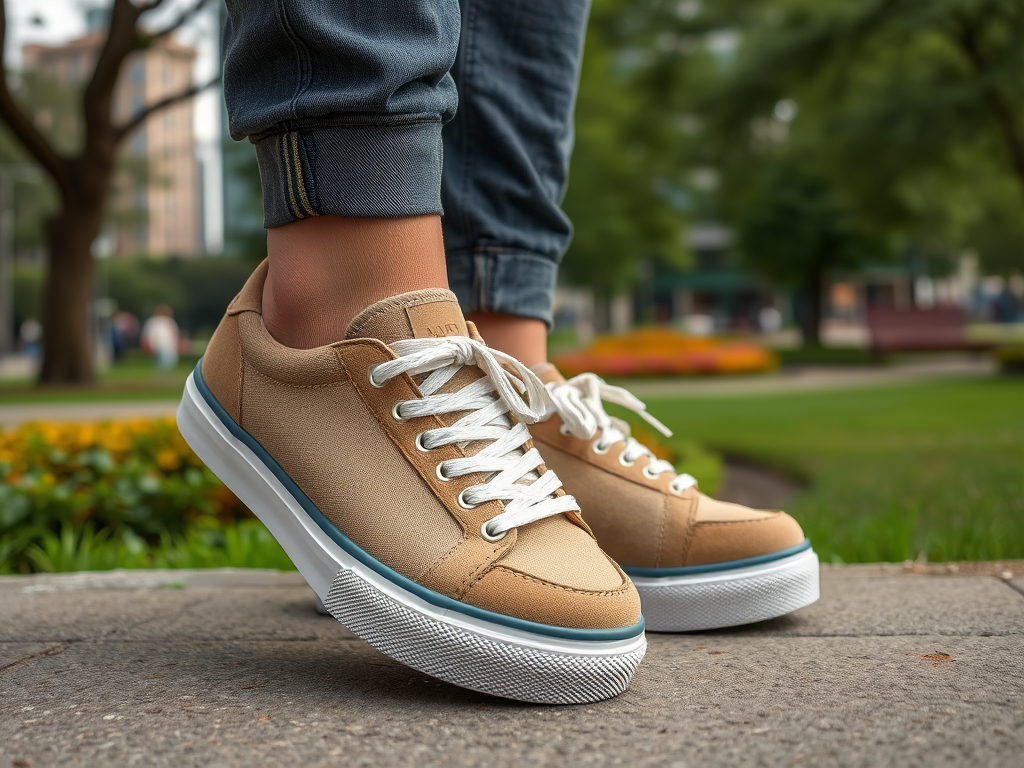The rise of eco-friendly sneakers marks a transformative shift in the footwear industry, where environmental consciousness is becoming a central theme in consumers’ choices. Today’s sneaker enthusiasts are increasingly aware of the impact their purchases have on the planet. As a result, they seek to balance style, comfort, and sustainability in their footwear options. But what exactly makes a sneaker eco-friendly? It’s all about the materials used and the processes involved in their creation. With a variety of sustainable materials available, each contributing to a smaller ecological footprint, it’s essential to understand what to look for when selecting your next pair of trainers. This guide will explore the materials that truly matter, paving the way for more informed and responsible footwear choices.
In recent times, sustainability has emerged not just as a trendy term but as a necessity in manufacturing practices. Shoppers no longer simply want products that look good; they want to know how they were made and the resources involved. Sustainable sneakers often incorporate innovative materials and responsible manufacturing techniques that aim to reduce waste, conserve energy, and ultimately minimize harm to our environment. As more brands adopt eco-friendly practices, consumers are empowered to make choices that align better with their values, creating a ripple effect that can drive change throughout the industry.
The Importance of Sustainable Materials

Understanding why material choice is crucial is the first step toward making an environmentally friendly purchase. Each material utilized in sneaker production can have varied repercussions for our planet. Increasing awareness of these impacts can lead to more sustainable consumer habits and a push for responsible manufacturing. Many sneaker materials commonly found on the market contribute significantly to environmental degradation, leading to pollution, resource depletion, and climate change. Therefore, discerning the difference between conventional materials and their sustainable counterparts plays a vital role in fostering a healthier planet.
Traditional sneaker materials, such as synthetic leather and petroleum-based plastics, contribute heavily to pollution and other environmental issues. Fossil fuel extraction processes are energy-intensive and often result in significant ecological disruptions. Pollution from the manufacturing process can negatively impact air and water quality, putting both wildlife and communities at risk. Furthermore, the disposal of synthetic materials can take centuries, resulting in massive landfills filled with non-biodegradable waste. As consumers become increasingly informed about these issues, they tend to seek alternatives that showcase a commitment to both sustainability and social responsibility.
Popular Eco-Friendly Materials

Eco-friendly sneakers are increasing in popularity, thanks to the availability of diverse sustainable materials that offer unique advantages. From natural fibers to innovative recycled components, here are some materials to consider when making your sneaker selection:
- Organic Cotton: Grown without harmful pesticides, organic cotton is a natural alternative that is gentler on the environment.
- Recycled Plastics: These materials reduce landfill waste by repurposing plastics from our oceans and landfills, offering a durable sneaker component.
- Bamboo: Fast-growing and requiring minimal resources, bamboo serves as a highly sustainable option for sneaker manufacturers.
- Natural Rubber: Sourced from rubber trees, natural rubber is both biodegradable and provides excellent traction.
| Material | Environmental Benefit |
|---|---|
| Organic Cotton | Minimal water usage and no pesticides. |
| Recycled Plastics | Reduces plastic waste and lowers carbon footprint. |
| Bamboo | Fast-growing, requires little water, and replenishes quickly. |
| Natural Rubber | Biodegradable with low environmental impact. |
As brands innovate and adopt sustainable practices, we can expect to see more exciting materials incorporated into eco-friendly sneakers. Each option serves as a testament to how footwear manufacturers can balance performance with environmental sustainability. This commitment to sustainability speaks volumes about the potential for responsible consumption in the fashion domain.
Innovations in Eco-Friendly Footwear
Sustainability is no longer just a static concept— it’s woven into the very fabric of the footwear industry. Brands are exploring revolutionary technologies in the development of eco-friendly sneakers. For instance, waterless dyeing techniques drastically reduce water consumption during manufacturing. 3D printing technologies also pave the way for significant reductions in material waste. These innovations not only heighten the sustainability aspect of production but also enhance overall efficiency in the creation process. As consumers, it’s essential to recognize the efforts being made across the board to bring these technologies to life.
How to Choose Eco-Friendly Sneakers
When embarking on the quest for eco-friendly sneakers, consider the following steps to ensure you make a responsible purchase:
- Aligning with Brand Values: Research brands that prioritize sustainable practices and uphold transparency within their supply chain.
- Checking Certifications: Look for labels such as GOTS (Global Organic Textile Standard) and Fair Trade that signify adherence to ethical and environmental standards.
- Trying Before Buying: Whenever possible, try on the shoes to ensure comfort and fit, even if you’re attracted to the material benefits.
Engaging in these practices can help amplify your positive impact while supporting brands that are dedicated to sustainability. Consumer choices play a significant role in creating a demand for eco-conscious alternatives.
Conclusion
Choosing eco-friendly sneakers can significantly reduce your carbon footprint while promoting environmental sustainability. Opting for materials that matter is not only an investment in your comfort and style but also a way to contribute to a more sustainable future. Every step we take can lead toward a healthier planet, especially when we actively support brands committed to eco-friendly practices. By incorporating these thoughtful choices into your lifestyle, you are joining a movement that aims to create lasting change in the fashion and footwear industries. Remember, it’s not just about fashion—it’s about making informed and responsible decisions that echo your commitment to our planet.
Frequently Asked Questions
- What are eco-friendly sneakers made of? Eco-friendly sneakers are made from sustainable materials such as organic cotton, recycled plastics, natural rubber, and bamboo.
- Are eco-friendly sneakers more expensive? While they can sometimes be pricier than conventional options, many consumers find that the environmental benefits and quality of materials justify the cost.
- How do I know if a sneaker brand is truly eco-friendly? Look for transparency in the brand’s material sourcing and manufacturing processes, and check for respected certifications that endorse their claims.
- Can eco-friendly sneakers be stylish? Absolutely! Many brands successfully combine style and sustainability, offering trendy designs while fulfilling eco-friendly criteria.
- How can I care for my eco-friendly sneakers? Follow the manufacturer’s care instructions and opt for natural cleaning products that align with sustainable practices.
